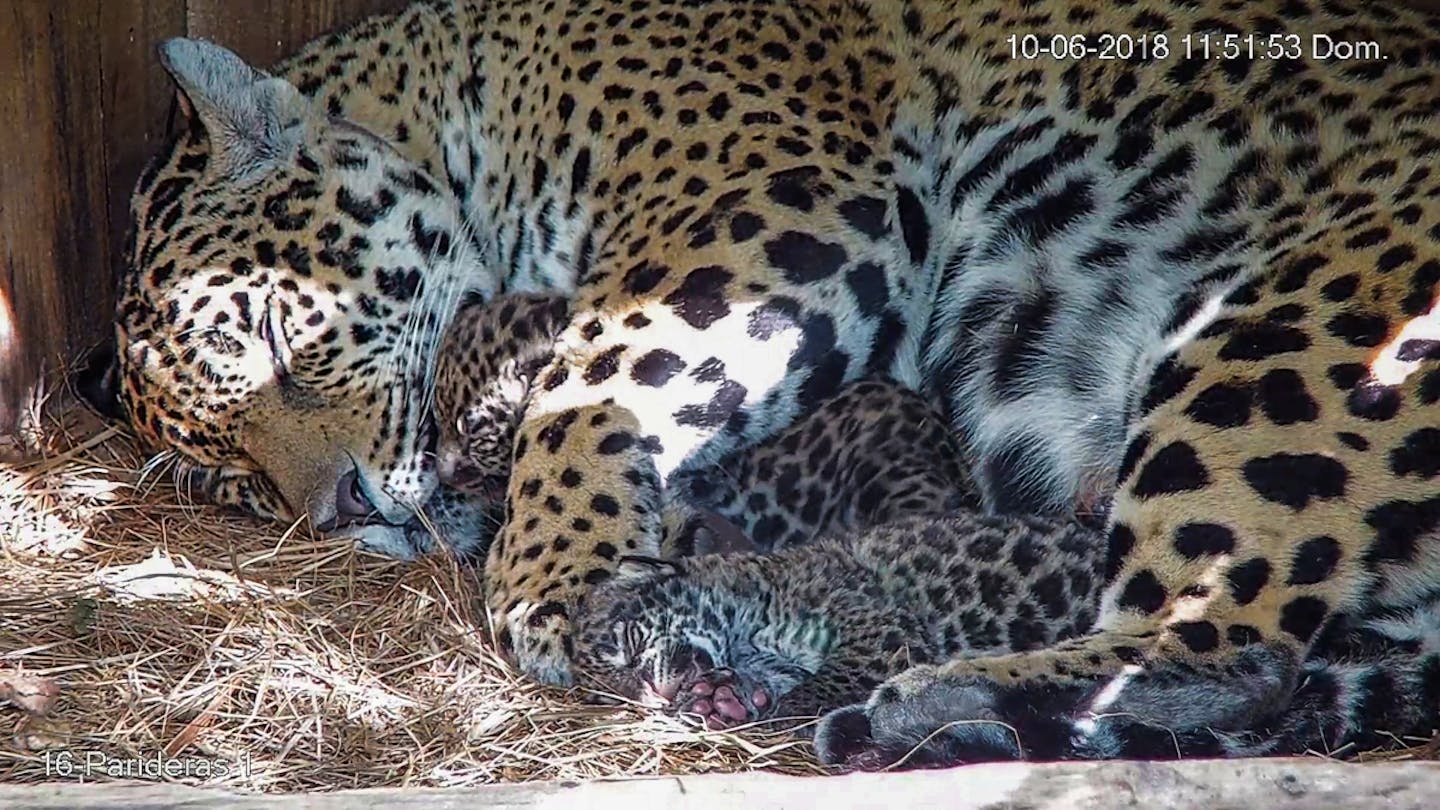Jaguar cubs in Iberá celebrate their first birthday
In June, two Argentinian jaguars celebrated their first birthday, an important milestone for the first cubs born in the province of Corrientes in over 70 years. The future of jaguar populations in Argentina depends on Arami and Mbareté, sister and brother. Together, they will play a critical role in the pioneering rewilding project of the Conservation Land Trust (CLT) of Argentina, a foundation created by Tompkins Conservation. In the coming year, CLT will prepare the cubs for their eventual release in the vast protected wetlands of Iberá.
The largest feline and apex carnivore in the Americas, jaguar populations once thrived from southwestern United States to Argentina. Today, habitat loss and fragmentation has cut the species’ range by 95% percent, while the worldwide population has fallen by up to 25 percent in the last two decades. The jaguar is now in critical danger of extinction in Argentina.
As the top predators in Iberá, jaguar presence is vital to achieve a healthy and complete ecosystem, helping to control the populations of other species, and keeping a balance in the food chain. The species is critical to the structure and function of ecosystems and biodiversity in Argentina.
CLT in Iberá has successfully overseen the reintroduction of endangered species into the wild — called rewilding — before, starting with giant anteaters, then Pampas deer, and on to the lowland tapir, the collared peccary and the red and green macaw. But the ambitious reintroduction of jaguars has never been done before, anywhere in the world. The huge protected area of the adjoining Iberá National Park and Iberá Provincial Park — over 3 million acres — offers ideal conditions for the comeback of the jaguar.
Arami and Mbareté are the first of their species born in the Jaguar Reintroduction Center, the largest onsite breeding center for felines in the Americas. The cubs live in a specially-designed enclosure of 1.5 hectares with their mother, Tania. Wildlife technicians closely monitor the cubs’ development via remote video cameras, as direct human contact would compromise their ability to survive in the wild.
The state-of-the-art center currently houses eight jaguars, including four releasable cubs, two of which are orphans rescued from the wild, and four reproductive specimens donated by zoos and rescue centers in Argentina, Brazil and Paraguay, which cannot be liberated, as they would not be able to survive in the wild. Tania, the mother of Arami and Mbareté, came from a zoo. Though missing a foot from a previous injury, she learned to hunt wild prey at the center and has shared her newfound expertise with the cubs.
Kristine Tompkins, president of Tompkins Conservation and UN Patron of Protected Areas, said

.png?auto=compress%2Cformat&w=200)